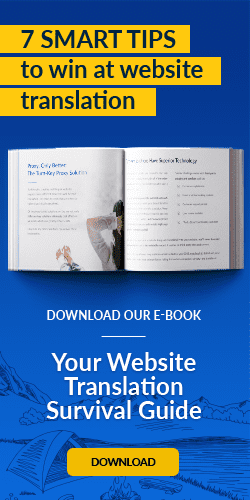Most U.S. Hispanics are fluent in Spanish and speak it regularly at home and at work-and many prefer navigating online in Spanish, too. B2C companies figured this out long ago, and often offer Spanish-language websites to appeal to Hispanic consumers.
Too many B2B companies, however, aren't following their lead. That's a big missed opportunity, considering the astonishing growth of Hispanic-owned businesses. In 2016 alone, U.S. Hispanic-owned businesses reported sales of $668 billion-more than double the total for 2007.
Most U.S. Hispanics speak Spanish regularly at home and at work—and many prefer Spanish online, too.
Nine out of ten B2B buyers say online content has a “moderate to major” effect on purchasing decisions. And it’s long been known that customers prefer to transact in their preferred languages. Put another way: If your B2B buyers can’t read your website, many won’t buy at all.
Hispanic entrepreneurs are looking for companies that understand their needs, want their business, and quite literally speak their language with a Spanish-language site. You should be serving them.
The Benefits of a Spanish-Language B2B Website
You reap distinct advantages when you translate your English-language site into a powerful Spanish-language version. Here are a few ways your company benefit in the short term, and for the long haul:
Credibility Boost
For starters, a translated site signals your sincere interest in, and commitment to, the Hispanic market. You stand out among other B2B organizations as someone they want to do business with.
Cost Savings for Marketing
Since there's less competition in advertising to the U.S. Hispanic B2B market, pay-per-click ad rates are less expensive in the Spanish-language marketplace. This translates into lower costs for keyword bids. You'll also realize savings in paid social advertising or sponsored content, thanks to the largely untapped market and economical advertising costs associated with it.
Cut Through the Noise
For Spanish-speaking entrepreneurs, encountering localized omnichannel content-such as marketing emails or social posts-can effectively and resonantly cut through the "noise" of all the English-only marketing and sales content they receive day in and out. This can be unexpected and memorable, and adds a level of personalization.
A Competitive Edge in Search
Google's Spanish-language index isn't as competitive as its English index. By having a well-translated, robust website experience in Spanish-and by providing the right signals to search engines-your company, and its products or services, can easily acquire a good ranking for Spanish-language queries. This naturally boosts your site's discoverability and credibility.
Benefits to Staff and Customers
When information about your products or services are localized, Spanish-speakers of all kinds-from your buyer's customers to their Spanish-speaking staff-can benefit. Users can become more educated on your offerings, and staffers can deliver superior customer experiences to Hispanic customers.
Signs of Great Solutions
If you want to engage with this thriving, growing B2B market, you’ll want to use a website translation solution that eliminates operational complexity, and can maximize the visibility of your website for your new customers.
Here are two characteristics to look for in a website localization provider:
Simplify the Process of Updating Content
Look for solutions that offer turn-key workflows and technologies that automatically detect and queue new content for translation. This is far more efficient and less risky than relying on time-consuming manual processes. For instance: Whenever your flagship site is changed or updated with new content, great solutions should automatically identify that content and put it into a workflow for immediate translation.
Optimize Your Spanish Content for Online Searches
Because Hispanic business owners often use Spanish-language web searches to make critical purchasing decisions for their companies, it’s important to not only have a Spanish-language site for your business, but to optimize that site for search engines.
Look for a solution that helps you achieve that by translating your keywords, "hreflang" tags, and metadata to match the searches most often used by Spanish-speaking decision makers. Even if it's not your primary goal, you may find that this process extends your business' reach to Latin American companies, many of which are eager to do business with U.S.-based vendors.
Last updated on May 04, 2018
